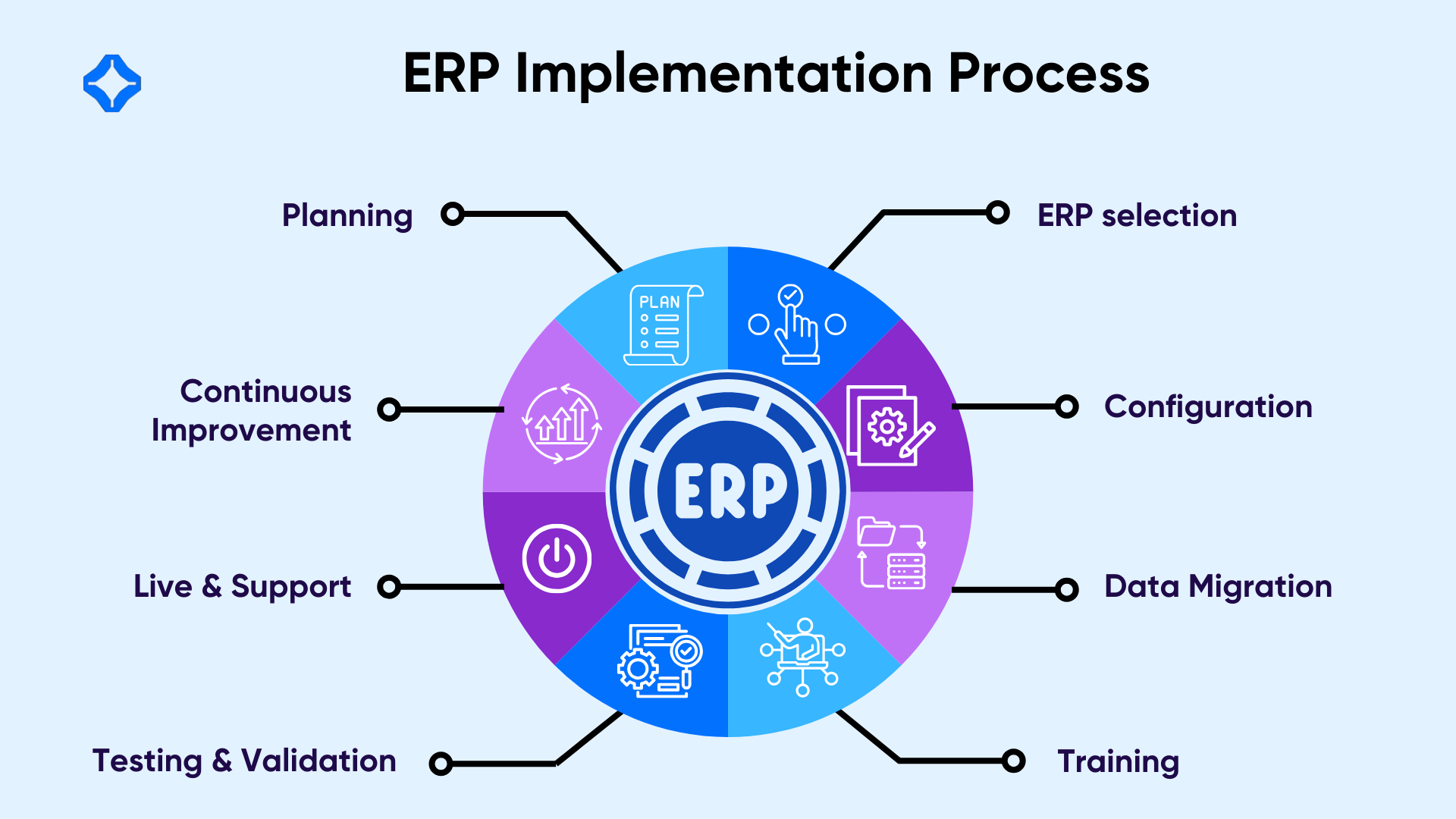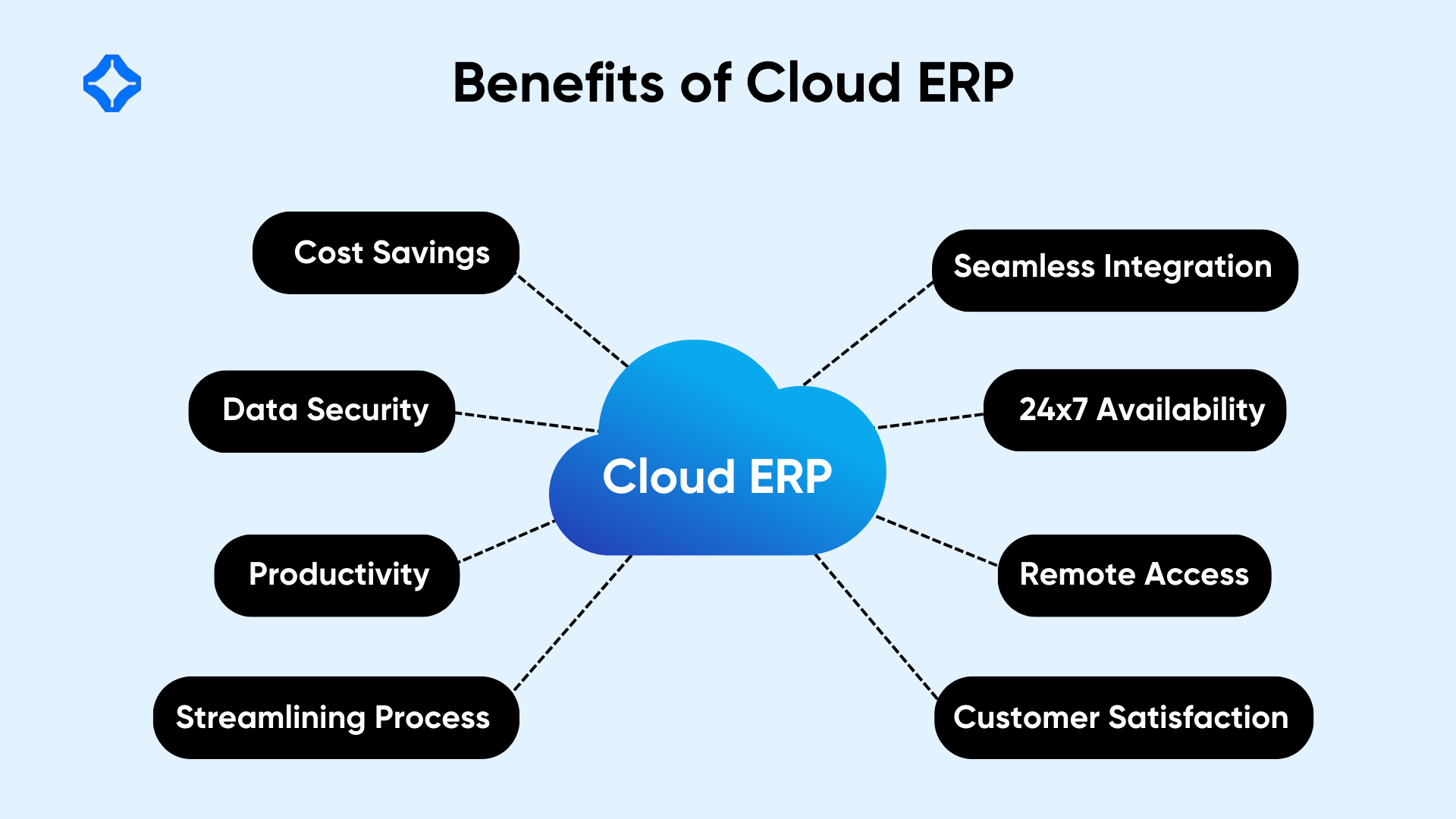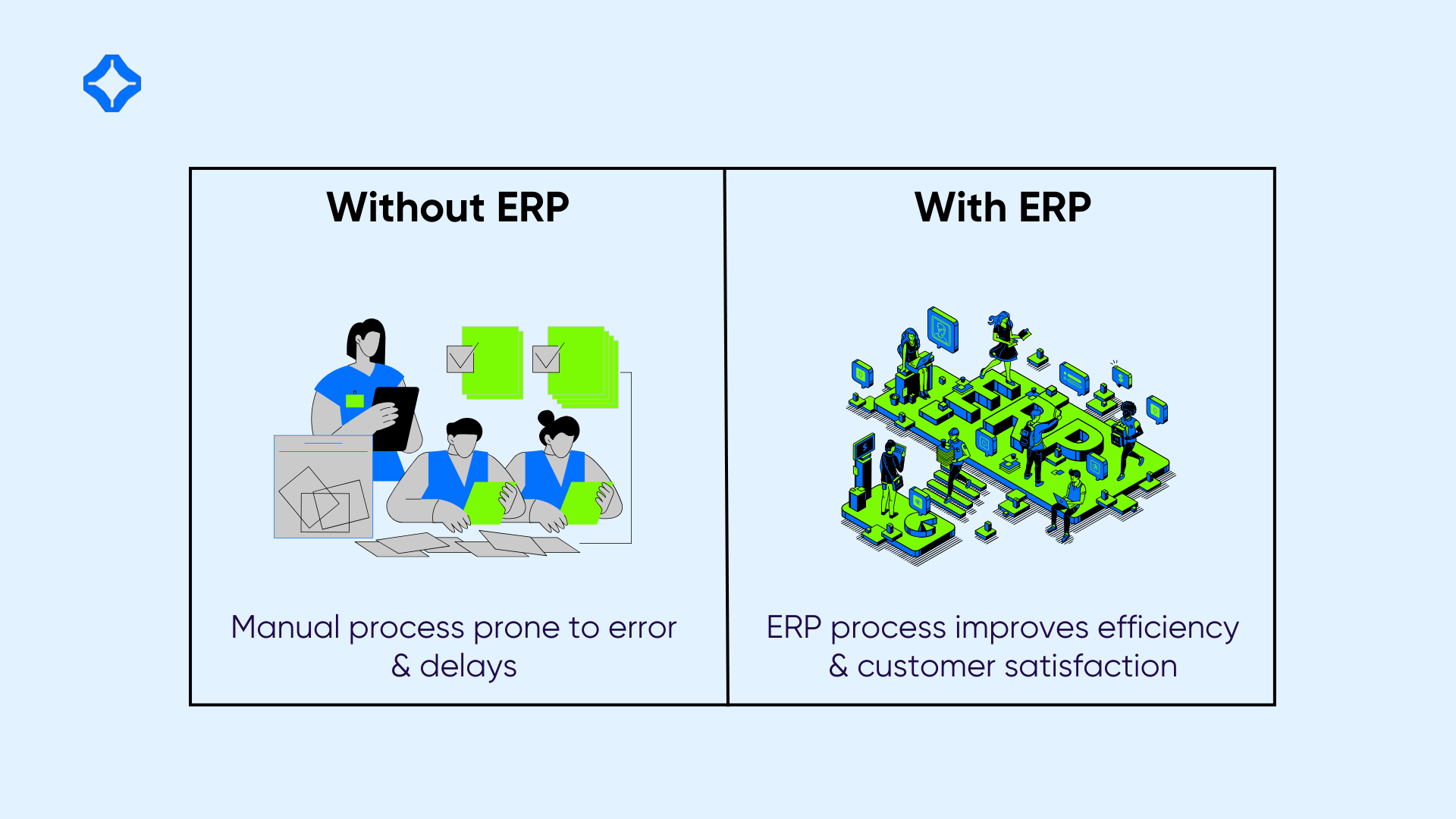Enterprise Resource Planning (ERP) implementation is a transformative process that integrates various business functions into a unified system. This strategic initiative demands thorough planning, clear objectives, and collaboration across teams.
A well-defined implementation strategy can unlock the full potential of ERP systems and achieve operational excellence.
Understanding ERP Implementation
ERP implementation involves integrating an ERP system into an organization’s operations, combining functions such as inventory, human resources, finance, and supply chain management.
This initiative is not merely about adopting software but reshaping business processes to align with the ERP framework. A successful implementation streamlines operations, improves data accuracy, and provides actionable insights, ultimately driving efficiency and scalability.
ERP Implementation Process

1. Setting the Foundation with Proper Planning
Every successful ERP implementation begins with a thorough enterprise planning phase. Organizations must start by defining their objectives, identifying inefficiencies in current processes, and aligning ERP goals with broader business strategies.
During this phase, assembling a cross-functional project team is essential. The team should comprise representatives from all major departments to ensure the ERP system effectively meets the organization’s different requirements. Clear communication is key to gaining stakeholder approval and overcoming resistance to change during ERP implementation.
2. Selecting the Right ERP System
Choosing the right ERP system is essential to ERP implementation success. Organizations need to evaluate systems based on their specific requirements, scalability, and cost. The selection process should involve assessing the functionality of various ERP modules to ensure alignment with operational workflows.
For example, a company focused on manufacturing may prioritize supply chain and production planning capabilities, while a service-based organization might consider customer relationship management features. Collaboration with an experienced vendor can provide valuable insights during this selection process.
3. Designing and Configuring the System
Once an ERP system is chosen, workflows are designed, and the system is configured to meet organizational needs. This involves mapping existing processes to the ERP framework and making necessary adjustments to improve efficiency.
It’s essential to establish user roles and permissions to maintain data security and streamline operations. Integrating existing systems, such as accounting software or customer databases, ensures seamless data flow across platforms, reducing barriers and improving decision-making capabilities.
4. Data Migration and Preparation
Migrating data from old systems to the new ERP platform is a critical step in the implementation process. Organizations must clean and validate their data to eliminate inaccuracies and redundancies.
This phase often involves collaboration between IT teams and departmental stakeholders to ensure the integrity of migrated data. Conducting trial runs and validating data in the ERP system can help identify and address potential issues early, providing a smoother transition after implementation.
5. Training and User Adoption
For an ERP system to deliver its promised benefits, employees must be sufficiently trained to use it effectively. Training modules should be customized to the specific roles of users, providing them with the skills needed to navigate the system confidently.
Engaging employees early in the implementation process develops a sense of ownership and reduces resistance to change. Organizations should also provide ongoing support and resources, such as user manuals and access to help desks, to address any challenges employees may face. Organizations can integrate AI chatbots into their ERP system to provide automated training and user assistance.
6. System Testing and Validation
Continuous testing is crucial before the full deployment of the ERP system to verify its proper functionality. This involves simulating real-world scenarios to validate workflows, data accuracy, and system performance. Following software development best practices improves ERP testing efficiency and reliability.
User acceptance testing (UAT) is particularly important, as it allows employees to interact with the system and identify any gaps or issues. Addressing these concerns during the testing phase minimizes disruptions during the live process.
7. Live and Post-Implementation Support
The live phase marks the official deployment of the ERP system, transitioning it from a project to an operational tool. This phase requires precise coordination to ensure a seamless launch. Organizations should monitor system performance closely, address any immediate issues, and provide on-the-spot support to users.
Post-implementation, regular system maintenance, and updates are necessary to align the ERP system with evolving business needs. Gathering feedback from employees and stakeholders helps identify areas for improvement and ensures the system continues to deliver value.
8. Measuring Success and Continuous Improvement
ERP implementation success is measured by its ability to achieve predefined objectives, such as improved efficiency, reduced operational costs, and enhanced decision-making capabilities.
Organizations should track key performance indicators (KPIs) to evaluate the system’s impact on business processes. Continuous improvement is vital, as it allows the ERP system to adapt to changing market conditions and organizational growth.
Benefits of Cloud ERP Implementation

- The adoption of cloud-based ERP systems is revolutionizing how businesses manage their operations, thanks to their flexibility, scalability, and cost-efficiency. Unlike traditional on-premises ERP systems, cloud ERP removes the need for upfront costs in hardware and infrastructure.
- This reduction in capital expenditure makes cloud ERP appealing to small and medium-sized businesses and enterprises looking to streamline their operations without incurring high initial costs.
- One of the most significant advantages of cloud ERP implementation is the ability to access real-time data from anywhere, enabling better decision-making and improved collaboration across teams. This option is particularly beneficial for organizations with remote workforces, as it provides all users with real-time access to the most current information.
- Enhanced security is another key benefit of cloud ERP systems. Reputable vendors provide advanced encryption protocols, multi-factor authentication, and regular compliance updates to safeguard sensitive business data.
- Integration with existing systems is essential to take advantage of the full potential of a cloud ERP solution. Businesses often rely on a mix of cloud and on-premises applications, such as customer relationship management (CRM) tools or inventory management software.
- Seamless integration between these systems ensures efficient workflows, minimizes disruptions, and optimizes operational efficiency. Leveraging APIs or middleware solutions can simplify the integration process and enable smooth data flow across platforms.
- Scalability is another standout feature of cloud ERP. As businesses grow, they can easily add users, expand functionalities, and handle larger transaction volumes without requiring extensive system overhauls. This scalability makes cloud ERP an ideal choice for organizations anticipating rapid growth or fluctuations in demand.
Cloud ERP implementation offers a transformative solution for modern businesses seeking agility, cost savings, and operational excellence.
The Role of the ERP Project Team
The ERP project team is the backbone of any successful ERP implementation, playing an important role in guiding the process from start to completion. Comprising individuals with diverse expertise and responsibilities, the team ensures that the ERP system aligns with the organization’s goals and delivers its promised benefits.
1. Project Manager
The project manager is the leader of the ERP implementation effort. They oversee the project’s progress, manage timelines, and allocate resources effectively. This role demands strong communication abilities and conflict-resolution skills to keep the team aligned with its objectives.
2. Business Process Experts
These team members deeply understand the organization’s operations and workflows. Their role is to map current processes, identify inefficiencies, and provide insights into how the ERP system can enhance operational efficiency. They act as a bridge between technical experts and end-users, ensuring the system meets practical business needs.
3. IT Specialists
IT specialists handle the technical aspects of ERP implementation, including system configuration, integration with existing software, and data migration. Their expertise ensures the ERP system operates smoothly and securely, minimizing potential disruptions during and after deployment.
4. Key Department Representatives
Representatives from key departments—such as finance, sales, human resources, and supply chain contribute their unique perspectives to the project. These individuals ensure the ERP system addresses the specific needs of their respective functions and helps foster buy-in among their teams.
5. Change Management Specialists
Change management specialists focus on preparing employees to transition to the new ERP system. They develop communication plans, address resistance to change, and create training programs that equip users with the skills needed to adapt to the system confidently.
6. Executive Sponsors
Executive sponsors provide strategic direction and ensure the project aligns with the organization’s goals. They advocate for the project at the leadership level, secure necessary resources, and remove roadblocks that could affect progress.
7. ERP Vendor or Consultant
External ERP vendors or consultants bring specialized knowledge and experience to the project. They guide the organization through best practices, troubleshoot technical challenges, and ensure the system is configured to meet specific business requirements.
8. End-User Advocates
Including end-users in the project team ensures that their needs and challenges are considered throughout the implementation process. These users provide feedback during testing and play a key role in training and adoption efforts.
By utilizing remote project management, ERP teams can coordinate implementation tasks seamlessly across different locations.
Risks of Not Implementing an ERP

- Data Inaccessibility: Organizations without an ERP system often rely on fragmented data stored across multiple systems. This results in inconsistencies, making it difficult to generate accurate and reliable reports.
- Inefficient Processes: Manual processes are not only time-consuming but also prone to errors and delays. These inefficiencies can lead to delays in important tasks, such as inventory updates and order processing, which ultimately impact customer satisfaction and operational effectiveness.
- Limited Scalability: As businesses grow, the complexity of operations increases, requiring systems that can scale seamlessly. Without an integrated ERP system, companies may struggle to expand into new markets, manage higher transaction volumes, or support additional business units.
- Poor Decision-Making: Real-time data is essential for making informed decisions, especially in a fast-paced business environment. Without an ERP system, businesses often rely on outdated or incomplete information, leading to average choices.
- Missed Opportunities: Automation and streamlined workflows are crucial for identifying and capitalizing on growth opportunities. Without an ERP system, organizations may fail to respond quickly to customer demands or optimize resource allocation.
Conclusion
Implementing an ERP system requires careful planning, collaboration, and commitment. By following a structured approach, organizations can overcome challenges and realize the transformative benefits of ERP systems. From initial planning to post-implementation support, every phase of the process plays a crucial role in achieving success. With the right strategy and a dedicated team, businesses can take advantage of the power of ERP to drive innovation, efficiency, and long-term growth.
FAQ
ERP implementation involves integrating an ERP system into an organization’s operations, combining functions such as inventory, human resources, finance, and supply chain management.
ERP stands for Enterprise Resource Planning. It describes software solutions designed to unify and manage essential business operations within a single integrated system.